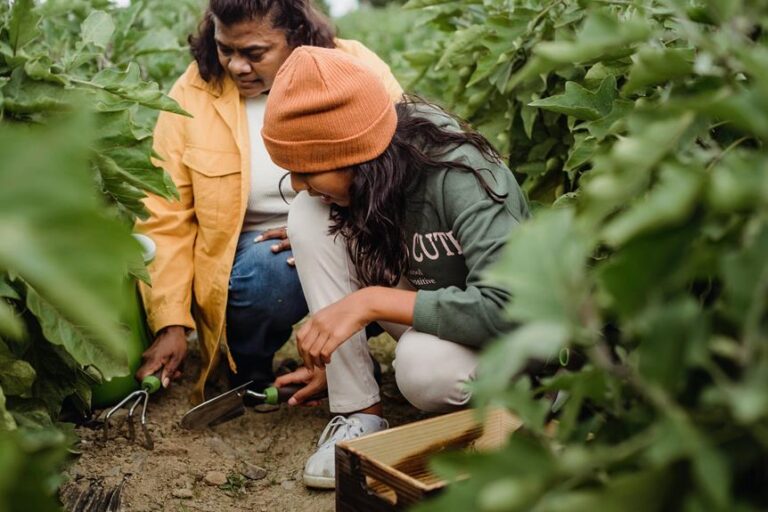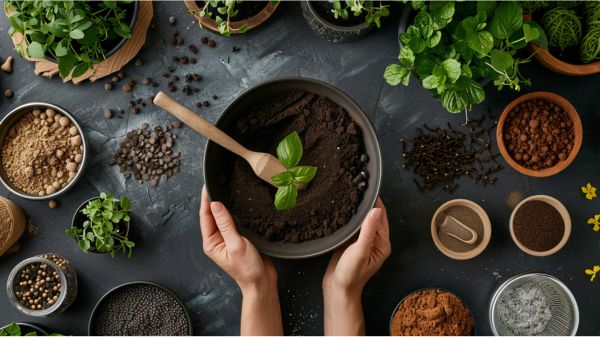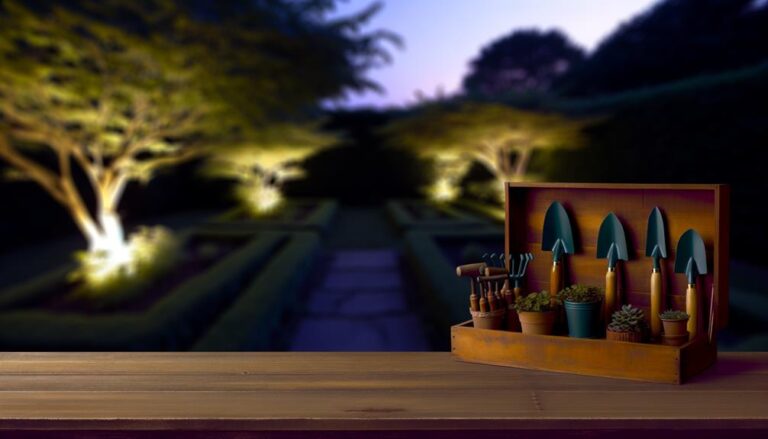Eco-Friendly Sustainable Garden Design: A Beginner’s Guide
So, you’ve decided to dip your toes into the world of eco-friendly sustainable garden design. You might be wondering where to start or how to make your outdoor space not only visually appealing but also beneficial for the environment.
Well, in this beginner’s guide, you’ll uncover practical tips and strategies to kickstart your journey towards creating a sustainable garden that harmonizes with nature. From selecting the right plants to nurturing a thriving ecosystem, each step plays a vital role in transforming your garden into a green oasis.
Key Takeaways
- Choose native plants for low maintenance, water conservation, and ecosystem support.
- Implement smart water strategies like rainwater harvesting and drip irrigation.
- Utilize eco-friendly landscaping techniques such as rain gardens and permeable paving.
- Assess outdoor space wisely for optimal plant selection and efficient design.
Importance of Sustainable Garden Design
Embrace the harmony of nature with sustainable garden design, where every plant and element plays a vital role in creating a thriving ecosystem.
When considering water usage in your garden, sustainable design offers innovative solutions to conserve this precious resource. By incorporating features like rainwater harvesting systems, drip irrigation, and choosing drought-resistant plants, you can significantly reduce water consumption.
These methods not only benefit the environment by preserving water but also lower your utility bills. Sustainable garden design ensures that water is used efficiently, promoting a healthier ecosystem while minimizing waste.
Through conscious choices and strategic planning, you can create a beautiful outdoor space that thrives while respecting and conserving water resources.
Assessing Your Outdoor Space
To create a thriving and sustainable garden, begin by thoroughly assessing your outdoor space to ensure optimal plant selection and efficient resource management.
Start by evaluating the amount of sunlight your garden receives, testing the soil quality, and considering existing water sources and drainage patterns for effective water management. Understanding these crucial elements will help you plan a garden that not only flourishes but also conserves resources.
Take note of any existing plants, structures, or obstacles that could influence your garden layout. Additionally, measuring your outdoor space and creating a scale drawing will aid in the accurate placement of plants and features. By assessing your outdoor space thoughtfully, you set a strong foundation for an eco-friendly and beautiful garden.
Choosing Native Plants Wisely
Selecting native plants thoughtfully is the cornerstone of a sustainable and thriving garden design, enhancing ecological balance and reducing maintenance needs.
Native plants, adapted to the local environment, require less water and care while supporting local wildlife. By planting them, you contribute to the ecosystem’s health, attracting beneficial insects and birds. These plants are naturally resilient to pests and diseases, minimizing the need for harmful chemicals.
Embracing a variety of native species not only creates a visually appealing landscape but also aids in the restoration and preservation of the region’s natural ecosystem. Consider the table below to guide your selection of native plants wisely, ensuring your garden flourishes with minimal intervention.
| Native Plant | Benefits | Ideal Conditions |
|---|---|---|
| Milkweed | Supports monarch butterflies | Full sun, well-drained soil, medium moisture |
| Bee Balm | Attracts bees and hummingbirds | Partial shade to full sun, moist soil |
| Switchgrass | Provides shelter for birds and insects | Adaptable to various soil types, drought-tolerant |
Related Post: Creating an Eco-Friendly Garden With Native Plants.
Maximizing Water Efficiency
Transitioning from wisely choosing native plants to maximizing water efficiency in your garden design involves implementing smart strategies to conserve water and enhance the sustainability of your landscape.
To optimize efficient water usage, consider the following:
- Installing a rain barrel to collect and store rainwater for later use, reducing the need for tap water.
- Implementing drip irrigation systems to deliver water directly to plant roots, minimizing evaporation.
- Incorporating drought-tolerant plants in your garden to reduce water consumption while maintaining visual appeal.
Implementing Eco-Friendly Landscaping
For a truly environmentally conscious garden, consider incorporating eco-friendly landscaping practices that harmonize with nature and promote biodiversity. Utilize native plants to support local wildlife and reduce water usage.
Implement rain gardens and bioswales to manage stormwater runoff effectively and prevent erosion. Opt for permeable paving materials that allow water to infiltrate the soil, reducing water pollution.
Create habitat areas with bird feeders, bat houses, and bee hotels to enhance biodiversity in the landscape. Choose solar-powered lighting and water features to decrease energy consumption and support sustainable garden design.
Frequently Asked Questions
How Do I Start a Small Sustainable Garden?
Assess your space for sunlight, water, and soil quality. Choose native plants and organic mulch. Harvest rainwater and practice companion planting. Begin by selecting seeds that thrive in your environment for a sustainable garden.
How Do I Get Started in Garden Design?
To get started in garden design, begin with plant selection. Assess your site’s conditions to choose plants that thrive. Incorporate native species for low maintenance. Design with biodiversity in mind. Implement sustainable practices for an eco-friendly garden.
How Do You Make an Ecological Garden?
To make an ecological garden, start by incorporating native plants and creating diverse plant communities. Use organic mulch and compost for healthier plants. Install rain gardens and use integrated pest management strategies. Follow these tips for a sustainable garden.
How Can I Make My Yard More Environmentally Friendly?
To make your yard more environmentally friendly, start by embracing nature’s recycling system with composting tips. Turn waste into treasure, nourishing your soil and plants. Let your yard be a green haven, where every scrap finds purpose.
Conclusion
As you step into your eco-friendly garden, imagine vibrant flowers buzzing with bees, lush greenery providing shade for birds, and a gentle trickle of water from your efficient irrigation system.
Your sustainable oasis isn’t just a garden, but a thriving ecosystem that supports life in all its forms.
Embrace the beauty of nature and the satisfaction of knowing you’ve created a harmonious space that will continue to flourish for years to come.







2 Comments
Comments are closed.